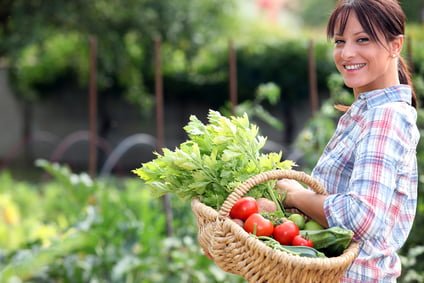 Many backyard gardeners prefer blossoms and herbs for the summer, but heartier veggies and fruits in the autumn. If you hope to have an edible option in your backyard come the fall, it’s time to start preparing now. The milder weather, pests going dormant and that idyllic moist yet well-draining soil of the autumn months make for a much easier bounty.
Many backyard gardeners prefer blossoms and herbs for the summer, but heartier veggies and fruits in the autumn. If you hope to have an edible option in your backyard come the fall, it’s time to start preparing now. The milder weather, pests going dormant and that idyllic moist yet well-draining soil of the autumn months make for a much easier bounty.
If you live in a region that has earlier frost periods, starting an autumn garden in late July or August is perfect. Don’t worry about the high daytime temperature because the evening coolness will even things out, more so as the daylight hours decrease. Choose foods that have short maturity dates—however, if you live in extreme heat, hold off until September.
Prep Work
Just like in the kitchen, you need to leave time for prep work. Hopefully you’ve been weeding, getting rid of diseased plants and keeping the soil untouched throughout the summer. That will make this job easier. When this is the case, simply clear space, mix in some compost and plant away. Unfortunately, most summer gardens can grow a little out of control. Start by cleaning the garden, removing weeds, spent plants and fallen fruits.
The two items that can stay are peppers and tomatoes, since they’ll still be ripening. Remember to rotate crops if this is you’re second planting season by taking note of what grew where, and then move mulch to the side. It’s easier to “freshen up” your garden without mulch in the way, and remember that if it’s still “good” you can use it for the autumn. In a pinch, use straw for mulch—it’s easy to scatter and spiders love it (they’ll be your helpful garden tenders). Another option is fallen and shredded leaves.
Getting There
Fluff your soil with a garden fork (no major tilling required in many areas). If you really want to cover your bases, now is the time to test your soil. Most attention should be paid to compost, which can be dressed as you till. Manure should have been composting for at least half a year, and remember that it can burn plants if it’s too fresh (and be a health hazard to you). Fertilizer can be added now if it’s slow acting, as can amendments such as blood meal.
Finally, consider frost protection such as hoop covers. Now is the time to get them installed. However, only install the frames for now and leave the covers for later. A little preparation in the short run can pave the way for an autumn bounty like no other. Are you ready?


